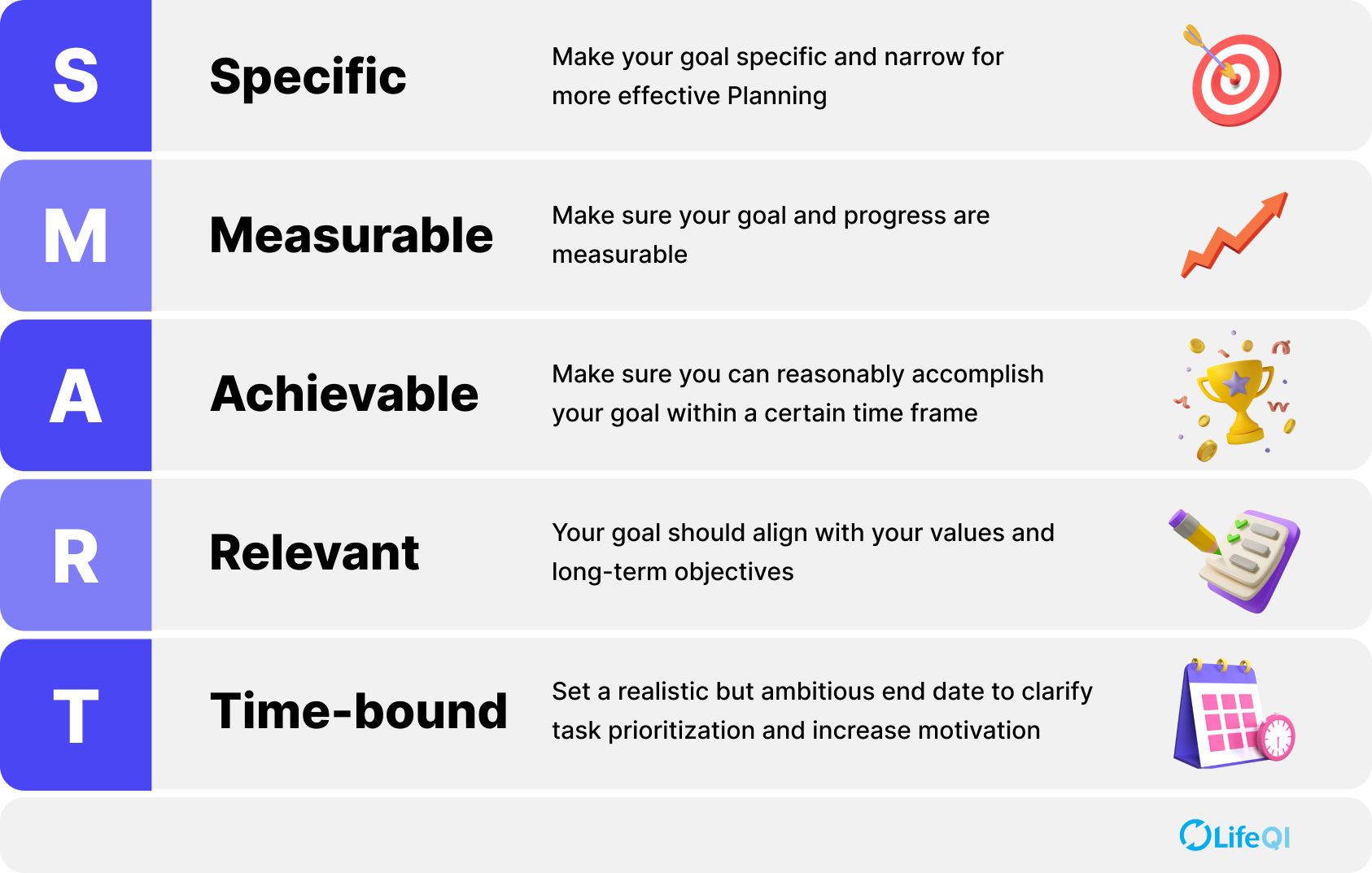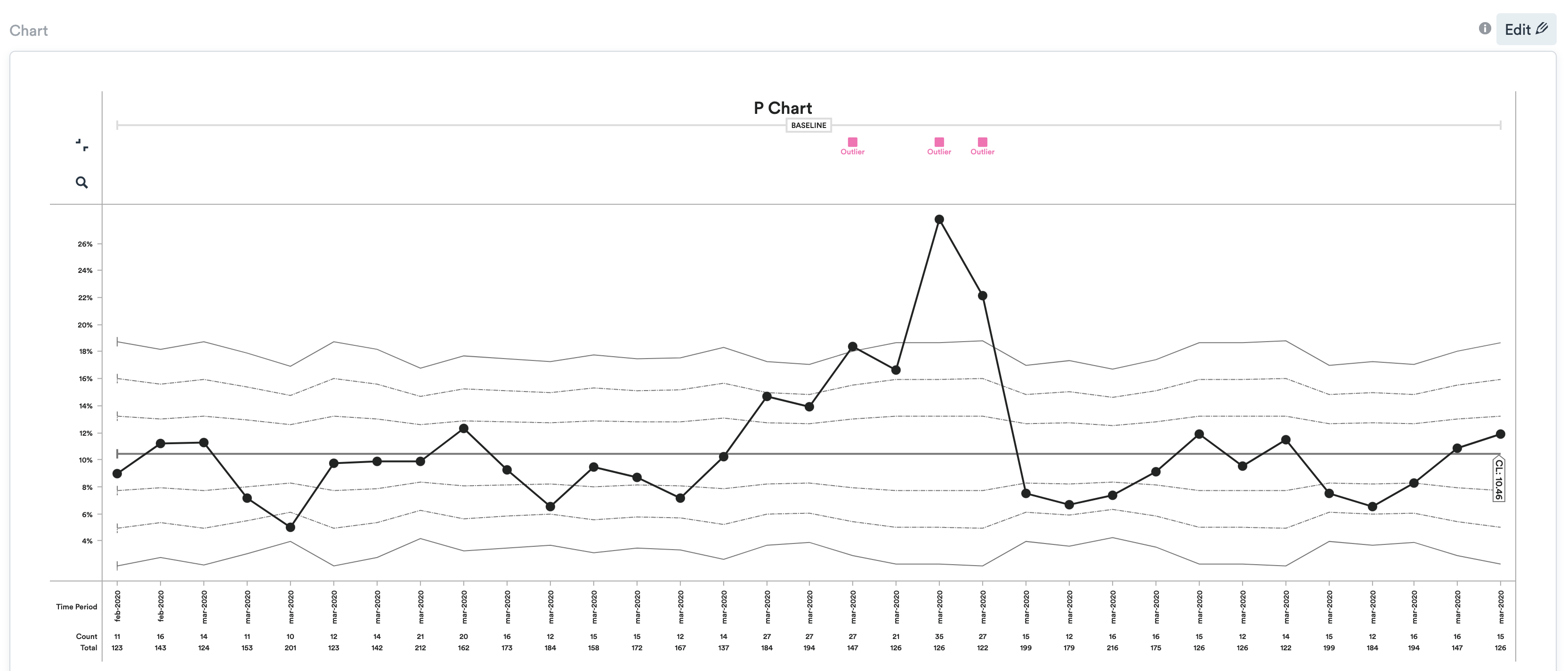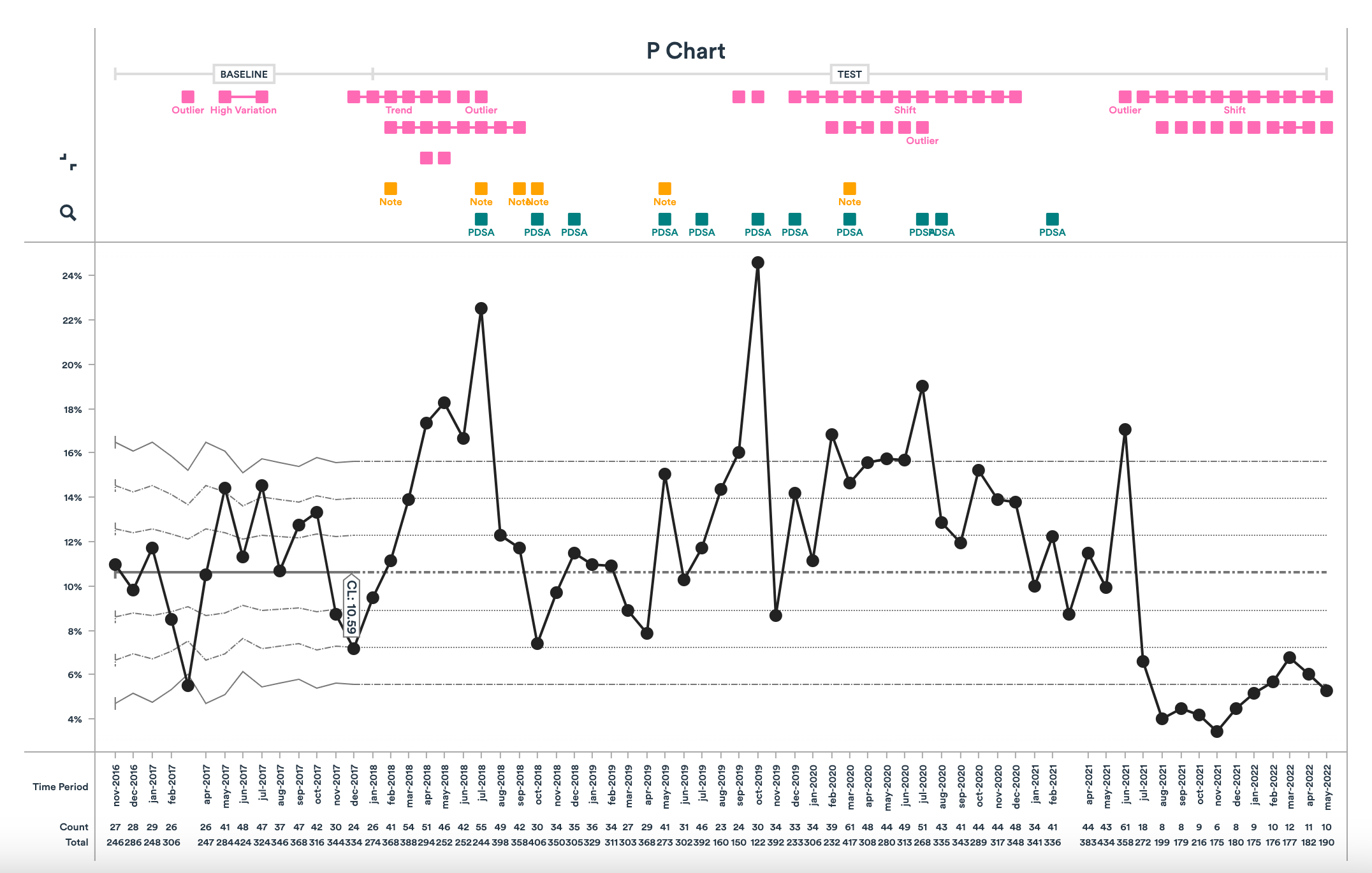Start improving with Life QI today
Full access to all Life QI features and a support team excited to help you. Quality improvement has never been easier.

Organisation already using Life QI?
Sign-up

Published on 31 October 2023 at 12:13
by Reka Toth

The success of any improvement initiative relies heavily on the ability to effectively measure progress and identify areas for enhancement. Measurement provides valuable insights into the effectiveness of strategies, helps track performance, and enables data-driven decision-making. However, achieving successful measurement in improvement efforts requires a systematic approach and adherence to certain fundamental principles.
In this article, we will explore some top tips for successful measurement of improvement projects. From defining measurable objectives to identifying relevant metrics, these useful tips will serve as a guide to enhance the measurement process and ensure you make the most of your data in any improvement endeavour.
Measurement plays a critical role in driving improvement. By providing objective data and evaluating performance against specific benchmarks, effective measurement enables teams to identify areas for growth and track progress over time.
With quantifiable data at hand, decisions can be made based on evidence rather than assumptions or personal biases. Through the process of measuring outcomes and analysing results, you can pinpoint trends, refine strategies, and implement targeted interventions to enhance efficiency and effectiveness.
Effective measurement in improvement initiatives offers several key benefits. First of all, it provides objective data that allows you to gain a clear understanding of your current performance. By measuring specific metrics or KPIs, you can identify areas for improvement and set realistic goals.
Secondly, measurement enables you to track progress over time. It allows you to compare current results with previous ones and understand the impact of implemented changes. This feedback loop helps identify successful strategies and provides valuable insights for future improvement efforts.
Finally, measurement can facilitate better decision making by providing evidence-based insight. 'Without robust measurement of quality, it is impossible to determine the extent to which new regulations or quality improvement interventions actually work and improve quality as expected, or if there are also adverse effects related to these changes.' (Improving healthcare quality in Europe)
So, if you want to maximise the success of your improvement initiatives, effective measurement is the secret.
Once you’ve got an understanding of what you want to measure, it’s important to ensure they are specific to the objective and achievable in the time-frame. By setting specific goals, you can identify areas that require further improvement and create a plan to address them effectively. Additionally, by ensuring that the goals are achievable, your team can stay motivated and focused on its path towards improvement without feeling overwhelmed or discouraged.
These objectives serve as powerful catalysts for growth, enabling you to make steady progress and constantly strive for excellence. By establishing clear objectives and milestones, you can track your advancement effectively and continuously refine the process if needed to reach new levels of success.
The most popular goal setting mantra is the SMART goal. The Minnesota Department of Health has published a very useful article on how to create SMART goals. Each goal should be Specific, Measurable, Achievable, Relevant and Time-bound.

SMART goals
An example for a SMART healthcare improvement goal might be:
Reduce the number of patients with pressure sore in Ward A by 10% by 31st December 2025.
This way, you have a target to aim for and can measure your progress accurately. Remember, the more specific your goals, the easier it is to track your improvement journey and understand success.
To ensure your objectives are measurable, you need to establish concrete criteria and metrics for success. If you can't measure it, you can't improve it. It’s also important to align your objectives with your overall goals. Each objective should contribute to the bigger picture and help you achieve your ultimate vision.
Ensuring metrics are relevant metrics is critical to understand what success looks like in any improvement project. You should ensure that the chosen metrics are meaningful and reflective of your objectives. This involves aligning the selected metrics with your improvement goals.
In its ‘Measuring for Improvement’ guide the NHS gives some very useful tips on what you should remember when starting to measure your improvement project. It underlines the importance of integrating measurement into the daily routine and giving clear definition for each measure so they are easily understandable for everyone involved in the project.
Another important thing to consider is to measure fidelity (the quality improvement analogue to adherence). A recent article from the BMJ defines fidelity as ‘the degree to which your intervention is working as intended’. Logically, if your process changes are not implemented with high fidelity, then your improvement project is likely to be unsuccessful. So, before you experience negative outcomes from your project, ask yourself if the change was implemented with the right fidelity.
If you are unaware of the fidelity by which the implementation was carried out, it is not possible to firmly establish whether your change led to improvement or not.
In improvement work, measurement should act to accelerate learning rather than slow it down. Where population sizes are large, it may not be practical (or even possible) to gather a complete dataset – in these situations, sampling can be used to give a representation of the total population. For example, when measuring patient satisfaction, it may not be practical to collect surveys from every patient, but perhaps you could gather responses from a sub-set of patients and apply that as a percentage to the total population.
Ideally a sample will be representative of your total population, but with fewer observation. There are several ways to control bias in sampling including simple random sampling, proportional stratified random sampling, and judgement sampling.
When it comes to measurement, it's all about balance. That's where leading and lagging indicators come into play. Leading indicators are like early warning signs that show you're on the right track, while lagging indicators measure the outcomes after the improvements have been made. By considering both types of indicators, you get a comprehensive view of your progress.
As suggested by the BMJ as well, you should carefully think about how long it would take before the change improves outcomes. With the theory of change (which explains how your proposed change will lead to different processes and outcomes) and the above-described fidelity/process measures for each element of your intervention, you can realistically estimate the lag time before you start to see the desired results.
Identifying what can go wrong during a quality improvement project, or individual intervention allows you to mitigate against potential risks. Some of the unintended downsides can be predicted based on ‘the effects your change may have on resources (e.g., cost associated with visual identifiers), providers (e.g., may overcompensate by doing things for the patients rather than promoting patient autonomy) and patients (e.g., feelings of discrimination)’. Overlooking these potential external factors that could impact the project's success may lead to unforeseen setbacks.
One way to uncover them is running PDSA cycles which allow to test your ideas on a small scale and thus identify a solution to the problem with the change.
By proactively identifying these potential problems, you can develop preventive measures to minimise deviations from desired outcomes and increase the likelihood of achieving successful results.
Before you embark on your improvement journey, it's essential to know where you're starting from. Gathering baseline data helps you establish a reference point, like a starting line for a race. This initial data gives you a benchmark to compare against as you progress.
As the NHS Measuring for Improvement guide states ‘it is very important that the period you choose for your baseline is representative’. Especially if there are big variations in your data during the dates of measurement. They continue by saying, ‘a good way to establish a robust baseline is to use SPC. For this you will need 15+ data points. If you are collecting data yourself, and have not got any historical data, start measuring as soon as you can and use the points up to the first change as your baseline.’

Baseline of an SPC chart in Life QI
So, collect your data and take that first step towards improvement greatness.
When evaluating your performance, it may be useful to compare it against the benchmarks to gain insight into your project's relative standing. It provides a valuable perspective on what's achievable and where you have room to grow. These benchmarks serve as standards of excellence in various aspects.
By comparing your own performance against these benchmarks, you can better understand your strengths and weaknesses and see how well you are performing compared to other organisations. Additionally, benchmarking helps to identify best practices within the industry that you can adopt or adapt to improve your own performance.
First things first, you need to decide how you are going to collect your data. Think about what information you need and how you can gather it efficiently.
You have two options to get data. Firstly, you can use existing data, so you only need to discover and analyse what has been collected by someone else. But usually, this isn’t the entire solution. In most cases you have to collect data for yourself as well.
This type of data collection requires meticulous attention to detail, precision in recording observations, and accuracy in data entry. You can choose from surveys, interviews, observations, and existing records – they are all valuable sources of data.
This hands-on approach enables you to have direct control over the entire data collection process, ensuring a higher level of quality control and reducing potential errors that may arise from other methods.
The NHS Measuring for Improvement guide gives a useful advice: ‘introduce the data collection system and monitor it to ensure that it can be maintained. Neither you nor the team should be disheartened: it does not take long before people adapt it into their daily routines and it becomes mainstream.’
Now that you have your data, it's time to make sense of it all. Don't be intimidated by the numbers and charts – they're just trying to tell you a story. Look out for trends, patterns, and outliers that can provide valuable insights into your improvement efforts.
Remember, you don't need to be a data scientist to analyse data effectively. Start by organising your data in a meaningful way and use a software solution such as Life QI to help you with displaying your data on SPC charts and automatically spot special cause variations in your process.

Special cause variation on an SPC chart in Life QI
And don't forget that healthcare improvement is a team sport. Involve others also in the analysis process – fresh perspectives can bring new insights.
Once you've collected and analysed your data, it's time to put it to work. Monitoring progress and identifying areas for improvement are vital steps in your measurement journey. Here are two golden rules to guide you.
Make monitoring a habit, not a one-time event. Establish regular check-ins to track your progress and keep everyone in the loop. Whether it's weekly, monthly, or quarterly – find a frequency that suits your needs. This way, you can catch any hiccups early on and make timely adjustments.
Reporting is also essential, but don't drown in overwhelming reports. Keep them concise, clear, and visually appealing. Nobody loves reading long reports – and you can easily get lost in the details. Focus on the key findings, highlight the areas that need attention, and present your insights in a digestible format.
With an all-in-one improvement software like Life QI, you can automate your reporting saving you hours of work, so you can focus on what really matters.
Data can be a valuable tool in helping you identify areas for improvement. It is important to analyse patterns, outliers, and areas where we may not be meeting your targets. These areas where you need to focus your improvement efforts.
But don't just stop at identifying the problems. You should strive to understand the underlying causes. Is it a process issue, lack of training, or poor communication? By delving deeper and understanding the root causes, you can develop effective improvement strategies that address the actual issues.
Measurement results should never gather dust on a shelf. Let's explore two golden rules to help you utilise your measurement insights effectively.
Measurement results are meaningless if you don't know how to interpret them. Dive into your data, ask questions, and derive meaningful insights. Try to look beyond the surface to uncover any interesting correlations or trends. Keep exploring until you find valuable insights.
And remember, insights are only valuable if you act upon them. Don't just stop at understanding, use your insights as a starting point for your next steps.
Measurement should be a continuous cycle of improvement. Use your measurement results to inform future strategies and initiatives. Identify what worked well and build on it. Also, identify what didn't work and adjust your process accordingly.
Don't be afraid to iterate, experiment, and try new approaches based on your measurement insights. The key is to always be learning, adapting, and striving for improvement.
So, there you have it – our top tips for successful measurement of improvement projects. Implementing these tips not only enhances the effectiveness of improvement initiatives but also paves the way for sustainable growth and progress.
By understanding the importance of measurement, defining clear objectives, selecting appropriate metrics, establishing baselines, implementing effective data collection and analysis methods, monitoring progress, ensuring data integrity, and utilising measurement results, you can foster a culture of continuous improvement. By consistently applying these rules, you can drive meaningful change, optimise performance, and achieve their desired outcomes.
Embrace these golden rules and embark on a journey of continuous improvement that will propel your organisation towards success.
Full access to all Life QI features and a support team excited to help you. Quality improvement has never been easier.

Organisation already using Life QI?
Sign-up